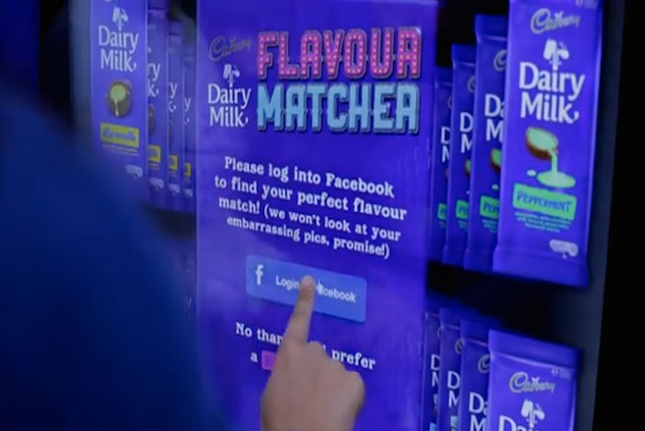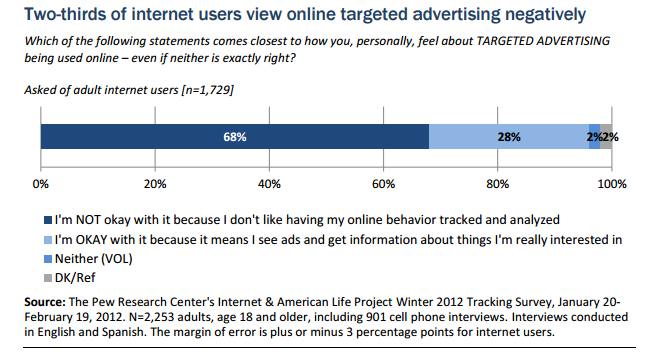Personalised marketing - creative or invasive?
One of the latest buzz phrases in digital marketing at the moment is "personal marketing at scale". Put simply, it's the ability to reach different consumers with different messages or content, rather than displaying the same content for everyone. It means you can fine tune your campaign using criteria like demographics, interests, location or purchase history so that you can reach a large number of people, all with something personally relevant. These tweaks can be subtle and unknown to the consumer, like a unique thumbnail or copy, or more obvious like including the consumer's real name.
Cadbury's have recently utilised personalised marketing in a very big way. The campaign, which ran in Australia, invited users to connect with pay-per-click adverts. Upon clicking, Idamoo technology created personalised videos using photographs and information on users' profiles. 90% of users watched their video to the end, 65% percent clicked through, and 33.6 percent converted by filling out a contest form. The campaign was also heavily shared, with more than 40 percent of additional campaign participants arrived from Facebook shares alone. A similar campaign by Cadbury's based on Facebook profile information such as age, interests and which pages they liked, matched users with a Dairy Milk flavour. They even rolled out the world's first Facebook-powered vending machine where customers could log in, take the test, find their flavour match, and then buy it.

Coca Cola has also utilised targeted advertising on Facebook for its 2014 Super Bowl campaign, and managed to turn around a controversial ad into a heartfelt personal experience. The Super Bowl remains uncontested as the most watched US TV event in history, and the program sells the most prestigious and expensive television ad space that money can buy. Coca Cola aired an ad during the event, featuring people singing the American National Anthem in different languages from all over the world. It was fairly misjudged, with a lot of complaints about the song being sung in foreign languages when the National Anthem was quintessentially American and, therefore, English. Instead of posting the ad is at was onto Facebook, they used users' location and language settings to show them a personalised version, completely in their language.

We’re only beginning to see evidence that this personalisation adds value, but on a micro level it’s immediately obvious. Think of your own social feeds or email inbox – you’re much more likely to pay attention to updates that are relevant to you whilst you’ll probably get annoyed when something invasive and irrelevant pops up. The effect is magnified on your mobile phone – many people share computers and are used to seeing relatively generic messages there, but a mobile is much more personal and anything not relevant to who you are, where you are, and what you’re doing feels out of place.
There is a line to be drawn, though, and the big question is where exactly do you stop? The film Minority Report paints a slightly overwhelming, dystopian future where all advertising is personally tailored and directed at you. There have been backlashes when marketers push it too far, for example by including your actual name or specifically referencing data you’d be uncomfortable with a company or brand knowing. We may be have the technological capabilities to target people called John who have a birthday and recently looked at football boot websites, but the creative use to do so needs to tread a thin line of being relevant without being invasive. A 2012 study by Pew found that 68% of consumers were against targeted advertising, as they didn't like their online behaviour being tracked and analysed, although interestingly, younger people are more open to it.

Gmail is a service which has come under fire particularly for its use of targeted ads based on the content of your emails. If you're discussing the latest episode of a TV show with someone over email within Gmail, you could get an ad for the boxset. Your email is scanned for keywords by computers (never actual people, Google assure you) and AdSense ads are shown based on them. Opting out isn't that easy either - you have to download an "advertising cookie opt-out plugin" for your web browser.
While Gmail's use of targeted ads does seem to be a clear violation of privacy, other channels like Twitter and Facebook use information which is publicly visible (page likes, age, location, gender etc), that you have specifically chosen to enter yourself. Proponents of targeted advertising say showing adverts based on things you've entered yourself is fair game. One point made is that services like Facebook, Twitter, Gmail and even TV are cheap or free because of advertising, of which targeted ads are a massive part, so it's just something you have to accept.
Overall, considering the attitudes, it is best to proceed with caution if you choose to run a targeted ad campaign. Subtle differences like gender or age can work wonders, especially if your business or service is specific to a certain group - makeup supplies, for example. But just because you can find information about users out, it doesn't necessarily mean you have to use it.